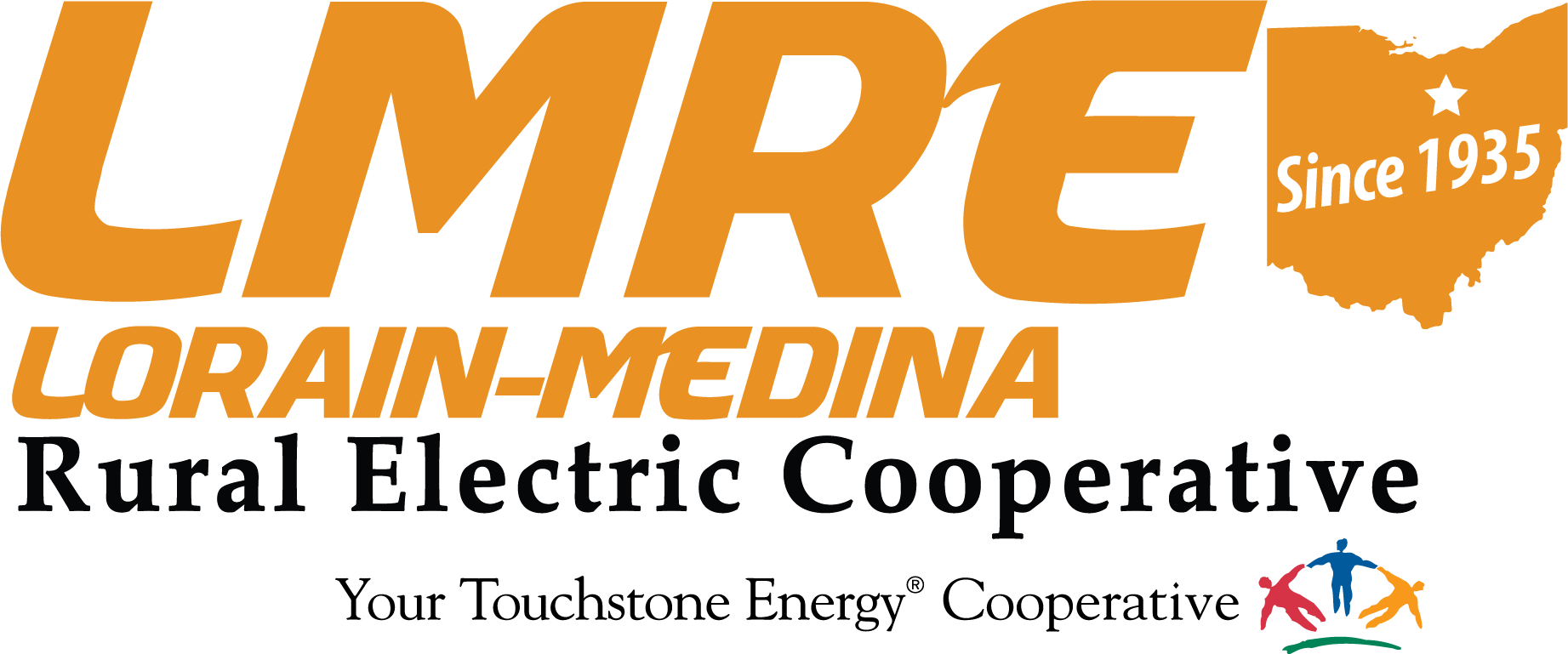Lorain-Medina Rural Electric Cooperative is an electric distribution cooperative serving the needs of about 16,000 consumers in Ashland, Huron, Lorain, Medina and Wayne counties in north east Ohio. We maintain about 1,500 miles of underground and overhead lines as well as 15 substations. Lorain-Medina Rural Electric has been serving the area since it was founded in 1935.
A not-for-profit electric cooperative, Lorain-Medina Rural Electric is owned and controlled by the members we serve. Members voice their opinions on the operation and control of the cooperative through their elected board of trustees.
Lorain-Medina Rural Electric is one of 25 Ohio electric cooperatives. Together, we own and operate a generation and transmission cooperative called Buckeye Power, Inc. Buckeye Power owns two of the three generating units at the Cardinal Generating Station located on the Ohio River near Steubenville, OH. The two coal-fired units provide electricity to all the cooperative members in Ohio. Learn more about Buckeye Power and their energy portfolio.
We are a proud Touchstone Energy Cooperative, an alliance of more than 750 electric cooperatives across the nation meeting service excellence standards. Touchstone Energy Cooperatives pledge to operate with integrity, accountability, innovation and a spirit of community awareness. Learn more about Touchstone Energy.
Our History
Nationally
In the 1930's, electricity was a common luxury as long as you lived in the city. The power companies of these times were willing to provide power to cities, but taking their power and providing it to rural America with little or no profit for the companies was unrealistic; rural America was left in the dark.
Many of the conveniences available to American cities at the time was unknown to rural America. Wood and coal stoves were used to heat homes, water and food. Lighting for the family was often provided by kerosene lamps and candles. Everything from milking the cows, pumping water and washing clothes was all done by hand.
In the city, labor saving devices were greatly improving the quality of life. Because there was no electric service to those living in rural areas, electricity was becoming the great divide among those living in the city and those in rural areas.
Farmers wanted electricity, however privately owned power companies said serving rural areas would be too costly due to the homesteads being so far apart. They also believed that farmers would not use much electricity. With no profits to be made, rural America remained without electricity until the late 1930's.
Under President Franklin D. Roosevelt, the Rural Electrification Administration (REA) was formed. The 1935 administration was formed to administer a program to encourage rural electrification by lending low-interest money to any group or company that would undertake the task. Even with the offer of low-interest financing, almost all the private electric companies chose not to get involved.
Due to the low interest of private companies, farmers took it upon themselves to get their own electricity and decided to form cooperatives to do the job themselves.
Locally
The rural communities of Lorain and Medina counties were among the first to go into action. Unpaid volunteers traveled the area to determine customer interest, areas to be served and cost estimates. Following the completion of the groundwork, Lorain-Medina Rural Electric Cooperative was incorporated Jan. 3, 1936. Both counties were included in the original plans to make them more acceptable to the REA to pay less for wholesale power.
The initial plan called for 168 miles of line to service an estimated 600 potential customers. Even as REA was approving this modest proposal and allocating $232,700 to start construction, Lorain-Medina Rural Electric had immediate growing plans. It was obvious almost immediately that the potential customers need for rural electric service in the two county area had been underestimated. A revised project called for 372 miles of line was rushed to REA, which promptly approved a maximum of $478,000 in construction loans.
The contract for constructing the first 372 miles of line was sent July 10, 1936, to the A.S. Schulman Co. of Chicago. Work started at once. By the end of the first year, 150 miles of line were constructed and the cooperative was serving approximately 400 families. Twenty years later the cooperative had grown to 575 miles of line, serving 4,677 customers, each using an average of 6,000 kilowatt hours per year.
In January 1998, Lorain-Medina Rural Electric formed a cooperative shared services and management federation with North Central Electric Cooperative of Attica, OH. Under the federation, the cooperatives share corporate management staff, accounting, billing, engineering, purchasing and marketing departments. Both cooperatives maintain separate offices and separate line crews.
